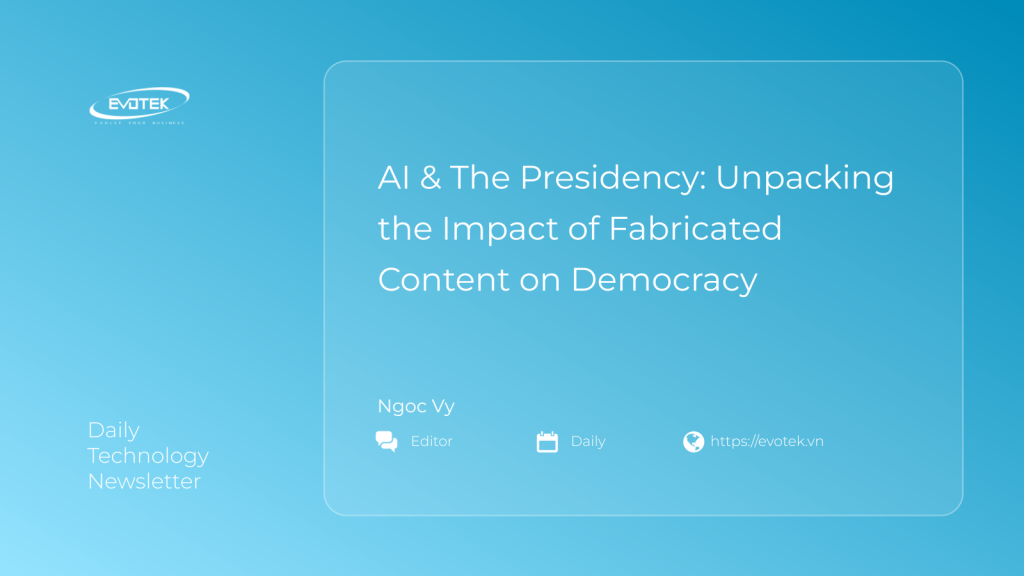Throughout history, leaders have leveraged emerging technologies to communicate with the public. Franklin Roosevelt masterfully utilized radio broadcasts, while John F. Kennedy and Ronald Reagan excelled in the age of television. Today, a new chapter in presidential communication is unfolding, marked by the extensive use of artificial intelligence (AI) to generate digital content.
Since January, the current administration has reportedly engaged in an unprecedented deployment of AI-driven imagery across social media platforms. The official White House X account has featured the president in various AI-generated portrayals, from Superman to a Star Wars villain. Beyond these whimsical images, more controversial and misleading visuals have surfaced, including fabricated depictions of alligators wearing ICE hats and crying members of Congress.
The president’s personal social media platform, Truth Social, has also become a conduit for sharing AI-fabricated clips. One striking example involved an AI-generated video showing former President Barack Obama seemingly being detained by the FBI. Other notable instances included digitally altered images of Democratic figures in “Shady Bunch” themed orange prison jumpsuits and a highly dubious video of a woman catching a snake bare-handed.
The Peril of “Slop-Posting” from High Office
This prolific use of digitally manipulated content is often informally referred to as “slop-posting”—a practice typically associated with immature online trolling. While generally considered absurd or mildly offensive in casual contexts, its adoption by the nation’s highest office transforms its implications entirely. When the president engages in this behavior, the critical line between verifiable reality and manufactured falsehood becomes dangerously blurred. The intent may be to entertain or provoke, but the effect is a profound erosion of public trust, leading supporters to potentially embrace everything and nothing as true. The fundamental question of whether an event genuinely occurred, such as the supposed arrest of a former president, can become secondary to the narrative it propagates.
Upholding Truth in Governance
The presidency inherently carries the immense responsibility of discerning and acting upon accurate information. The White House functions as a central hub for intelligence, analysis, and strategic planning, all geared towards providing the president with a clear, factual understanding of global events to inform critical decisions. The expectation is for the president to be the ultimate consumer of facts, not a purveyor of fabrications.
While past presidential administrations have faced scrutiny over misstatements or false evidence—from the Gulf of Tonkin incident to Watergate, or claims regarding WMDs—such instances typically triggered significant public outcry and consequences. Yet, the current volume and nature of AI-generated political content appear to be desensitizing the public. Just a few years ago, a sitting president sharing a falsified video of a former president would have ignited a major scandal. Now, public fatigue seems to prevail amidst a relentless stream of accusations, including allegations of “treason” and “rigged elections.”
Even former President Barack Obama, who typically avoids direct engagement with political provocations, addressed the “bizarre allegations” and “constant nonsense” emanating from the White House, dismissing them as “ridiculous” and a “weak attempt at distraction.”
A Historical and Technological Perspective
The manipulation of images by those in power is not a new phenomenon. Autocratic regimes, such as the Soviet Union under Joseph Stalin, routinely retouched photographs to erase political rivals or enhance leaders’ images. More recently, North Korean leaders Kim Jong Il and Kim Jong Un have employed Photoshop to refine their public appearances. Even non-nefarious uses exist, such as the Walt Disney Company systematically removing cigarettes from old photos of Walt Disney to promote a healthier image.
However, what once required weeks of painstaking effort by skilled professionals can now be achieved in mere moments. The rapid advancements in AI technology have made digital manipulation cheaper, more accessible, and frighteningly realistic. In the past, AI-generated content was often easily distinguishable by its bizarre quirks, like distorted features or garbled text. Today, the subtle imperfections—such as awkward handling of fingers or slight lettering errors—are often the only giveaways, and even these are rapidly being overcome.
The Dual Threat to Society
This technological leap poses two critical risks to society and democracy. The first is the potential for malevolent actors to disseminate highly convincing fake videos that are widely believed, leading to real-world consequences, including conflicts ignited by fabricated evidence. The second, equally perilous, is the pervasive distrust in all visual media. If the public becomes accustomed to an endless stream of digital forgeries, genuine footage of critical events—such as human rights abuses or candid political confessions—may simply be dismissed as “fake” by a jaded populace. The implications for accountability and informed public discourse are dire.
The environment fostered by the prolific use of AI-generated content is one where truth becomes fungible, facts are whatever one’s political faction asserts, and trust in verifiable information disintegrates. While this climate may benefit those in power by insulating them from accountability, it fundamentally harms the rest of society, undermining the very foundations of democratic principles.

 日本語
日本語 한국어
한국어 Tiếng Việt
Tiếng Việt 简体中文
简体中文